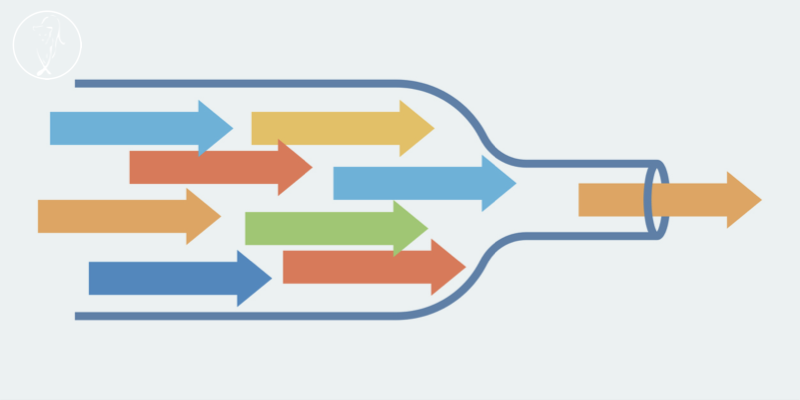“A chain is only as strong as its weakest link.” – Proverb
Bottlenecks are process weak points that slow down operations, cause delays, and frustrate customers. Identifying and addressing these inefficiencies is essential to improving performance and customer satisfaction. With a process-driven mindset, businesses can pinpoint bottlenecks, eliminate waste, and streamline workflows for smoother service delivery.
1. Map the End-to-End Process
Begin by mapping out the full workflow from start to finish. Include every step, decision point, and handoff. A visual process map reveals where time and resources are consumed—and where delays are most likely to occur.
2. Monitor Process Metrics
Use data to detect where bottlenecks form. Long lead times, backlog buildup, or excessive wait periods signal problem areas. Key metrics such as turnaround time, cycle time, and task completion rates help pinpoint where performance dips.
3. Collect Input from Frontline Staff
Team members involved in daily operations often have first-hand insight into process breakdowns. Regular check-ins, team feedback, or workflow audits can uncover manual delays, miscommunication, or outdated procedures that hinder progress.
4. Prioritize Bottlenecks That Impact Performance
Not all slow points are equally urgent. Focus first on those that significantly affect customers or business outcomes. For example, a delay in invoicing may impact cash flow, while delays in responding to queries can reduce customer satisfaction.
5. Redesign and Test Process Improvements
Once the root cause of a bottleneck is clear, redesign the process to eliminate unnecessary steps, automate where possible, or redistribute tasks. Testing the new process with a pilot group before full implementation is a good idea.
Example: Streamlining Invoice Processing
A professional services firm found that client invoice approvals were consistently delayed. By mapping the process, they discovered that approvals were waiting for manual sign-off. They introduced digital approval workflows, reducing invoice processing time by 50% and improving cash flow.
Key Takeaway
Bottlenecks slow progress and damage the customer experience. Identifying and eliminating them requires clear process mapping, metric analysis, and employee engagement. A systematic approach leads to smoother operations, faster service, and better performance.
Next Steps
Choose a key process and map it from start to finish. Gather input from team members, analyse where delays occur, and implement a targeted improvement plan to address high-impact bottlenecks.

Dr Michélle Booysen is a process strategist and consultant with 30+ years of experience helping organizations optimise operations and drive growth. Specializing in linking processes to strategy and performance, Michélle and her team empowers businesses to enhance customer service, boost performance, and scale sustainably through innovative methodologies that have transformed outcomes for SMEs worldwide.
More articles by Michélle


























